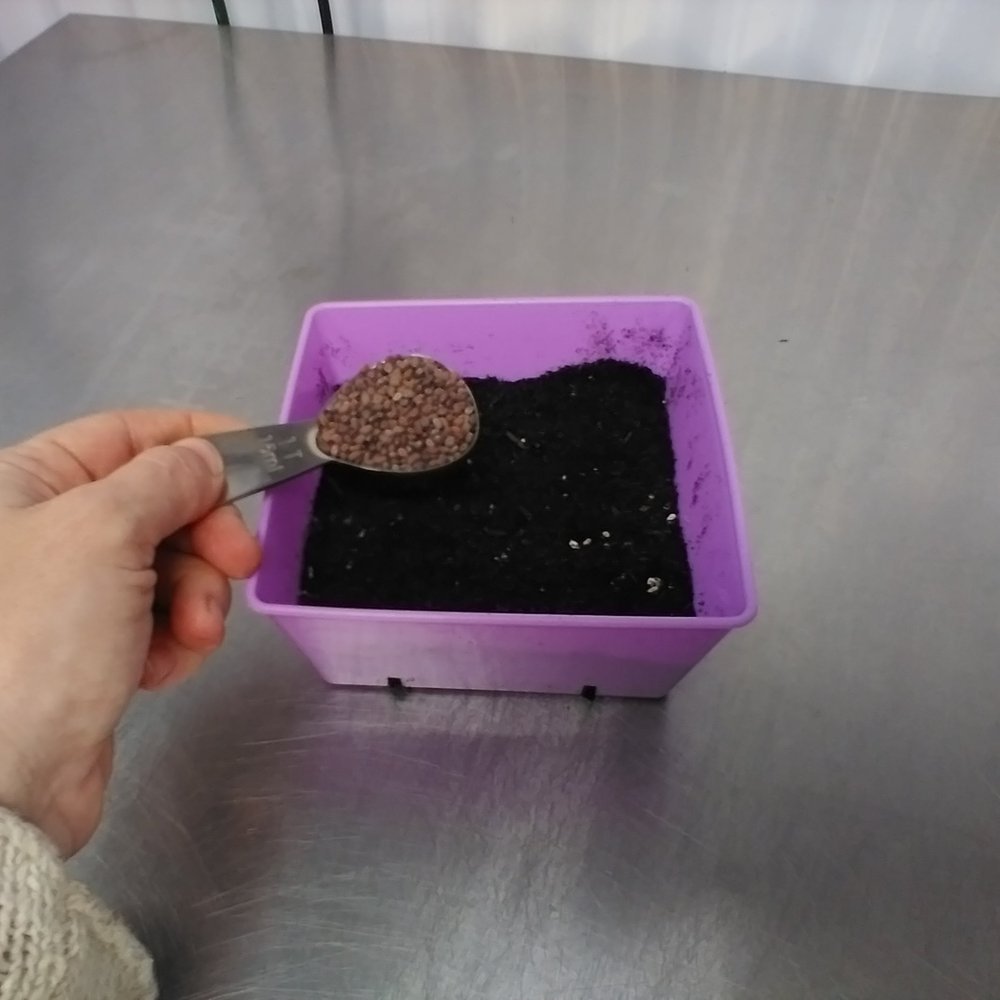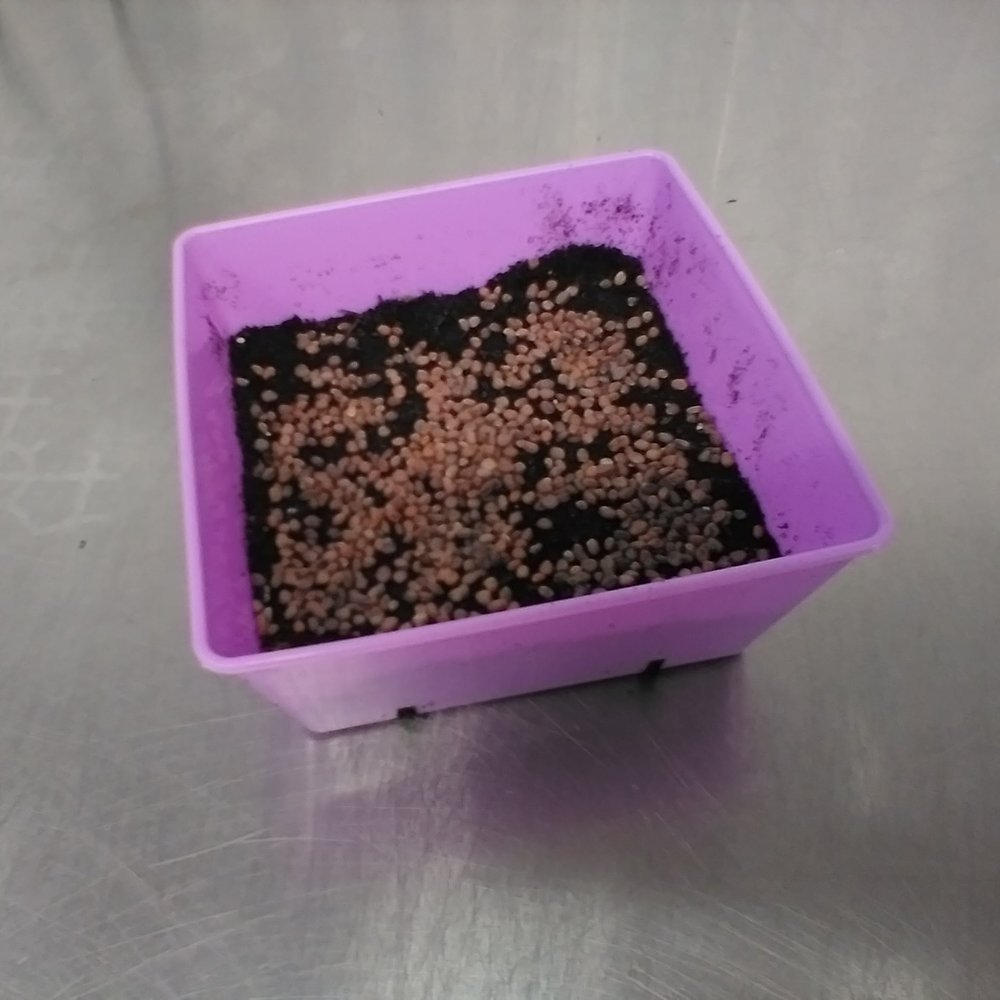Grow Your Own Microgreens
Originally published March 6, 2023
Microgreens are an amazing source of nutrients and can be added to almost any meal.
I’ve been growing microgreens since 2018, selling them to restaurants, seasonally at farmer’s markets and I now offer weekly home delivery. I’ve also put together Microgreen Growing Kits for those who want to grow their own (it also makes a fun gift!)
Although growing your own microgreens at home is a pretty simple process, many people have questions along the way. I’ve put together this growing guide to show you the process and answer common questions.
In the kit you will find everything you need to grow 4 types of microgreens. Included is a set of 5 growing trays (4 in which to grow and 1 to use inverted over the sunflower shoots to give them more space to grow and loosen the hulls), organic microgreen soil mix in which to grow the micros and organic seeds. They trays are heavy duty so you can save them to grow more microgreens in the future. Refill kits are available in the farm store at the South Bend Farmers Market.
Sunflower seeds and pea seeds should be soaked overnight before planting. Rinse the seeds in clean water and then soak for 8-12 hours. Use a large container and plenty of water as they will expand quite a bit as they absorb water.
Radish and broccoli seeds to NOT require soaking before planting.
Add ¼ of the soil mix to each tray (about 1 cup) and gently pat it down so that you have a very even and level surface for the seeds to sit on. Try not to compact the soil any more than you need to.
Each seed packet contains the correct amount of seeds for one growing tray. Simply scatter the seeds as evenly as possible over the soil. They will be fairly dense which is exactly what you want. Do not cover the seeds with soil, they will grow best on top of the soil.
Once the seeds are in the soil, you can gently mist them with water being careful not to make the trays too wet or to wash the seeds out to the sides of the tray. You want the seeds to stay evenly spaced.
Set the trays on a plate, pie dish, cookie tray, etc. to catch any water that comes through the bottom holes.
At this point you need to cover the trays in order to give your microgreen seeds a blackout period so they can sprout in darkness. If you are not growing all your trays at once, it is quite easy to use a second tray on top of the seeds in a nesting fashion – don't worry about the upper tray touching the seeds. You can also just use a cutting board, plate, cookie sheet or anything to cover the trays and provide darkness.
Check on your trays each day to make sure they haven't dried out too much and see if they are sprouting. If planting is considered Day 1, then they should be ready to be uncovered and put into light by about Day 4. Choose a bright spot with as much direct light as possible, such as a sunny window sill. If you happen to have grow lights then you can set them quite close to your sprouting microgreens. They will look fairly weak and yellow when you first uncover them, but you will begin to see the tiny plants greening up once they get into the light. Give them a good water at this point, but be careful not to keep them soaking wet all of the time. A small amount of water each day is the best approach, You will notice them wilting if they need more water.
TIP: On the day you uncover the sunflower shoots, water then and spray the tops and the cover the tray with an empty inverted tray and give them an extra day of dark and dampness. This can help loosen the hulls and give the large micros space to expand.
WHAT IS THAT? Many of the micro seeds grow little root hairs when they are sprouting. These little root hairs can easily be confused with mold. These are a normal part of growth and not to be worried about. If you are unsure, mist the space with a little hydrogen peroxide. Mold will fizz when exposed to the hydrogen peroxide.
root hairs on radish microgreens
Most of the microgreens will be ready to start cutting by around Day 8-10. If you keep them well watered, the trays should last for a week so you can cut what you need each day. The exception to this is sunflowers. Sunflower micros are at their optimal flavor and texture when they are in their cotyledon (seed leaf) stage. When the true leaves grow, the shoots begin to get slightly bitter. If you notice the true leaves emerging, the best thing to do is to cut all the sunnies and store them in an airtight container in the refrigerator.
pea shoots coming out of darkness and pea shoots ready to eat
All the microgreens can be harvested with a knife or scissors and stored in bags or jars in the refrigerator if you prefer not to keep the trays growing once they have come to maturity.
Review:
Moisten growing medium
Fill trays evenly
Pre-soak peas and sunflowers
Scatter seeds on top of soil
Cover trays to provide a blackout period
Check daily
Uncover around Day 4 – water and put under lights
Water lightly every day
Harvest around day 8-10 (maturity will vary slightly)
Don't allow sunflower micros to grow a second set of leaves
Store in bags or jars in the refrigerator after harvest if not eating immediately
Enjoy!







